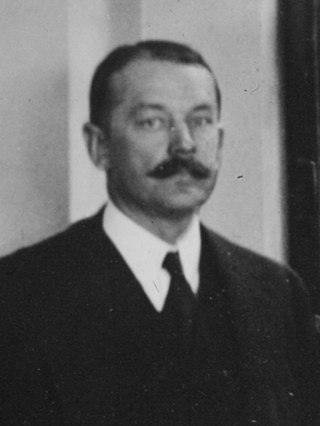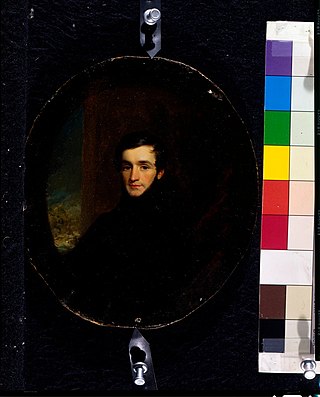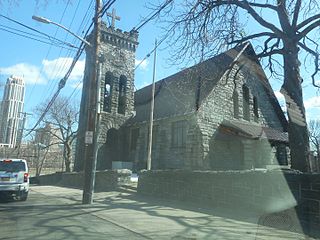
William Woodward Sr. was an American banker and major owner and breeder in thoroughbred horse racing.

James Gallatin was an American banker who was the son of Albert Gallatin.

Edith Hope Goddard Iselin was an American heiress and sportswoman who was the first American woman to compete as a crew member in the America's Cup yacht race. She also owned thoroughbred racehorses.

William Jay was an American soldier and a lawyer. He served in the Union Army as a lieutenant colonel during the American Civil War. He served as the 40th President of the Saint Nicholas Society of the City of New York.

John Carroll was an American prelate of the Catholic Church who served as the first bishop of the Diocese of Baltimore, the first diocese in the new United States. He later became the first archbishop of Baltimore. Until 1808, Carroll administered the entire American Catholic Church.

Junius Spencer Morgan III was an American banker and a director of the Morgan Guaranty Trust Company.

Charles Oliver Iselin was an American banker and yachtsman who was captain of racing yachts that won the America's Cup three times.

The Parish of St. Gabriel and of St. Joseph was formed in August 2015 with the merger of the Territorial parish of St. Gabriel on Division Street with the personal parish of St. Joseph on Washington Avenue, both in New Rochelle, NY. St. Gabriel is the parish church. However, St. Joseph "will maintain a regular schedule of Masses and the celebration of other sacraments". Both parishes were established around 1900 through the generosity of the Iselin family.
Adrian Georg Iselin was a New York financier who invested in and developed real estate, railroads, and mining operations. For many years during his early business career he was engaged in importing with his brother, William Iselin, being one of the most successful merchants of New York in the middle of the century. After retiring from the importing trade, he established the banking house of Adrian Iselin & Co. He is considered the founder of the Iselin family in the United States.
Frederic D. Bronson, Jr. was a prominent American lawyer during the Gilded Age in New York City.
Columbus O'Donnell Iselin was an American financier and philanthropist who was prominent in New York Society during the Gilded Age.
DeLancey Astor Kane was an American soldier and horseman who was prominent in New York Society during the Gilded Age. He was called the "father of coaching in the United States."
Adrian Posey was an American politician, attorney, businessman and newspaper publisher from Charles County, Maryland.
Adrian Georg Iselin Jr. was an American banker.
Louis McLane Jr. was an American financier from a prominent Maryland family who became a prosperous California forty-niner.

Jean-Charles-Marie-Louis-Felix Pascault, Marquis de Poléon was a French-American aristocrat best known today for building Pascault Row in Baltimore.

Frederic William Stevens was an American lawyer and banker.
The Gallatin National Bank was a bank headquartered in New York City founded in 1829 by U.S. Treasury Secretary Albert Gallatin. In 1912, it was absorbed into the Hanover National Bank.
Archibald Gracie King was a prominent American banker.
Frederick Dobbs Tappen was an American banker who was president of the Gallatin National Bank.










